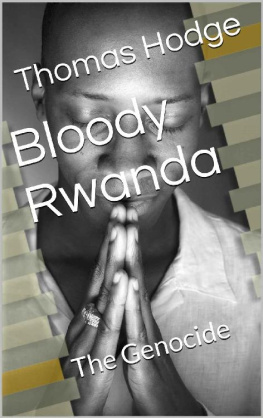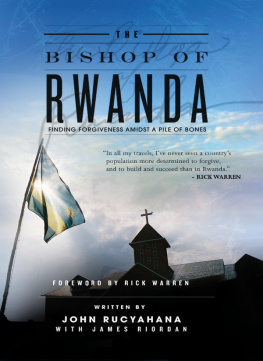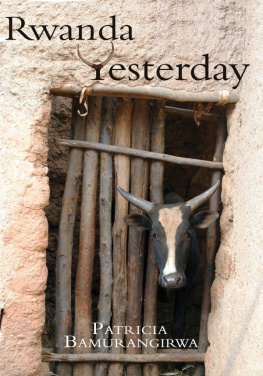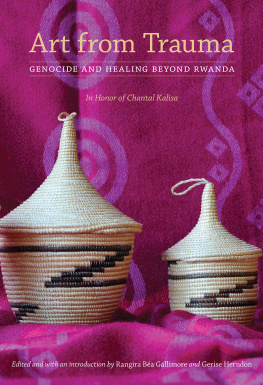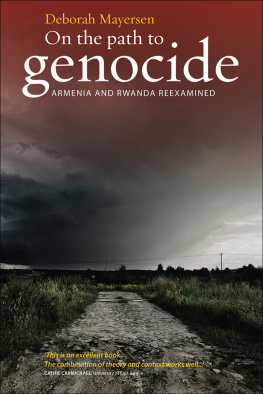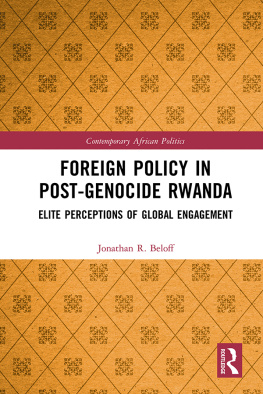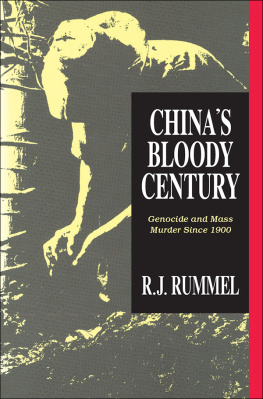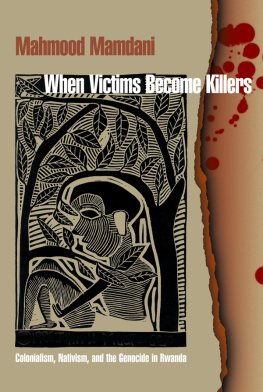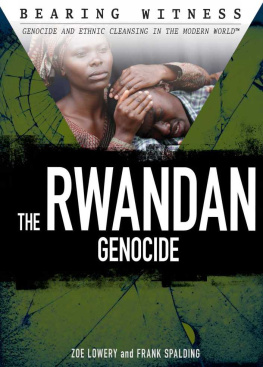Thomas Hodge - Bloody Rwanda: The Genocide
Here you can read online Thomas Hodge - Bloody Rwanda: The Genocide full text of the book (entire story) in english for free. Download pdf and epub, get meaning, cover and reviews about this ebook. year: 2014, genre: Politics. Description of the work, (preface) as well as reviews are available. Best literature library LitArk.com created for fans of good reading and offers a wide selection of genres:
Romance novel
Science fiction
Adventure
Detective
Science
History
Home and family
Prose
Art
Politics
Computer
Non-fiction
Religion
Business
Children
Humor
Choose a favorite category and find really read worthwhile books. Enjoy immersion in the world of imagination, feel the emotions of the characters or learn something new for yourself, make an fascinating discovery.
- Book:Bloody Rwanda: The Genocide
- Author:
- Genre:
- Year:2014
- Rating:3 / 5
- Favourites:Add to favourites
- Your mark:
- 60
- 1
- 2
- 3
- 4
- 5
Bloody Rwanda: The Genocide: summary, description and annotation
We offer to read an annotation, description, summary or preface (depends on what the author of the book "Bloody Rwanda: The Genocide" wrote himself). If you haven't found the necessary information about the book — write in the comments, we will try to find it.
Bloody Rwanda: The Genocide — read online for free the complete book (whole text) full work
Below is the text of the book, divided by pages. System saving the place of the last page read, allows you to conveniently read the book "Bloody Rwanda: The Genocide" online for free, without having to search again every time where you left off. Put a bookmark, and you can go to the page where you finished reading at any time.
Font size:
Interval:
Bookmark:
Examining the 1994 Rwandan Decisions
Of the United Nations
Thomas Hodge
Examining the 1994 Rwandan Decisions
Of the United Nations
In examining the United Nations decisions during the 1994 Rwandan genocide incident, one can clearly see issues concerning conflicting interests among key actors in the United Nations decision-making process. Throughout the process of the United Nations taking in demands and supports and converting those inputs into decisions, one can clearly see that a breakdown did occur somewhere in the process. The Rwandan genocide has often been seen as one of the United Nations greatest failures. In examining, the incident one will truly be able to see where the process falls apart leading to the deaths of hundreds of thousands of people by means of systematic annihilation. One should take into consideration that the United Nations was created following World War II for the purpose of advancing a respect for human rights as can be seen in the first article of the U.N. Charter (United Nations, 1985). In light of the purpose of the United Nations, one can easily determine that the organization had failed to uphold its original purposes due to the great amount of lives that had been lost in Rwanda.
In examining the demands that were placed on the international political system, several key actors should be addressed that were relevant in the situation. Firstly, the Tutsi population of Rwanda was a population that ideally should have been requesting relief from their persecution. Contrarily, many Tutsi refugees were not fully aware of the extent to which the killings had occurred reach until several weeks into the incident (Kuperman, 2000). The voice of the Tutsi people of Rwanda were heavily silenced until after several decisions had been laid out by the UN. This could be seen as being affected by their lack of governmental representation due to the assassination of the Rwandan President. The peacekeepers of the U.N. Assistance Mission for Rwanda (UNAMIR) had a great demand for further assistance in Rwanda as the commander of the mission had sent communications to the Secretariat attempting to notify the Security Council of possible violence prior to the Rwandan Presidents assassination.
Many of the non-governmental organizations such as the Red Cross, African Rights, and the Human Rights Watch demanded international intervention to avoid catastrophic loss of lives. It was clear that such organizations were appalled by acts of clear genocide. These organizations demanded that a peacekeeping force step in to stop the violence that was occurring in the country and prevent the slaughter of hundreds of thousands of people. The non-governmental organizations also demand protection for their own people that were in Rwanda.
The states that would be assisting Rwanda if a decision was made to intervene had demands of non-involvement. The western countries had a demand upon the system to reduce their losses. This can clearly be seen as Belgium withdrew its peacekeeping forces from Rwanda after sustaining causalities during the first few days of the reaction to the Rwandan Presidents assassination. Many larger actors in the organization like the United States, France, and the United Kingdom demanded that more information be given as to the legitimacy of allegations of genocide. They did not wish to overstep the boundaries of infringing on states sovereignty and did not wish commit personnel or funds if only warranted by a typical civil war in an African nation. Neighboring countries of Rwanda had concerns regarding an influx of refugees pouring across their borders. Some of these countries include Uganda, Zaire, and Tanzania. These neighboring countries could see an overwhelming number of refugees as an unwanted burden (Kuperman, 2000).
The countries of France and Belgium had provided a degree of support to the United Nations effort by providing a peacekeeping force to aid in maintaining the peace in Rwanda prior to the outbreak of genocide. These countries along with the United States also had provided the United Nations with a great deal of financial support through dues and funding. This could be seen that they were vested in the organization to either improve their own interest or that they intended on promoting the values established in the UN charter. The countries of Uganda and Tanzania did pay dues to the United Nations and maintain membership but to a much lesser degree than the larger countries. The NGOs like the Human Rights Watch and Red Cross had provided the organization with valuable information and expert advice about the situation unfolding in Rwanda.
The decision-making process of the United Nations was carried out through a series of discussions and reviews. The overlapping norm that comes into light with the Rwandan genocide is one of the guiding principles of the UN that were laid out in the first article of the UN charter which is to promote the respect for human rights. To protect human rights seems to be fairly straight-forward until it comes into conflict with infringing on a states sovereignty. This clash of values led to an ethical dilemma in the UN as to how to approach the issue with Rwanda. The delays allowed the perpetrators of the genocide ample time to carry out the killing of hundreds of thousands of people. The rules and procedures to make a determination as to what was going on in Rwanda were effectively used against the organization to decrease its effectiveness in resolving the issue.
The Hutu majority in Rwanda that was carrying out the systematic killing was aware that the United Nations would not step in unless they had clear evidence of genocide. Knowing this, they made efforts to avoid mass killings in the view of foreigners (Kuperman, 2000). The well- hidden genocide resulted in debates among the permanent members of the UN Security Council and the non-permanent members of the council. The United Nations debated on the appropriate actions to take in Rwanda over several months. The debate began well before the genocide started. On the day prior to the Rwandan Presidents assassination, the UN Security Council had recalled several support elements of the UNIMAR in Resolution 909 (United Nations Security Council, 1994a). This initial decision was made even though the council was concerned over violence and issues with degradation in security, humanitarian and health situation of Rwanda. In making the decisions, the United States and France did have a great influence in the decisions of the United Nations as they were permanent members of the Security Council with substantial contributions to the organization in the form of UN financial dues and personnel support. The Human Rights Watch also did have some influence on the organization as it provided information to the organization and advice from subject matter experts.
There were several possible alternative avenues of approach to the situation in Rwanda . Kuperman (2000) outlined the possibilities of direct U.S. military mobilization in an effort to halt the genocide. Several possible levels of intervention were examined. A major issue with U.S. military intervention would have been the time in which it would have taken to deploy troops to Rwanda rapid enough to be effective in curtailing the genocide. Kuperman found that rapid deployment of troops would have saved between 50,000 and 100,000 lives depending on the level of response. This would have involved a great deal of U.S. investment into the Rwandan incident. This would not have been highly beneficial to the United States as Rwanda was seen as a strategically unimportant country.
Through several Security Council resolutions, one can see that the genocide in Rwanda had gradually become clear. The descriptions of the violence Rwanda evolved through the resolutions and reports to become more vivid. Resolution 912 of the Security Council referred to the violence in Rwanda as mindless violence and carnage which are engulfing Rwanda (United Nations Security Council, 1994b). The reports were still hesitant of referring to the situation as genocide even weeks into the incident. In June, Resolution 925 endorsed the augmentation of UNAMIR in Rwanda with two additional battalions of support (United Nations Security Council, 1994c). A month later, Resolution 935 established a commission of experts to investigate the allegations of genocide and provide reports that would identify the individuals responsible for the violations of humanitarian laws (United Nations Security Council, 1994d). Finally, the Security Council of the United Nations established the International Tribunal for Rwanda in Resolution 955 to prosecute the individuals in Rwanda that were responsible for the genocide (United Nations Security Council, 1994e). These decisions were reached based on pressures placed on the hegemonic states of the U.N. to abide by the mission of the UN charter in upholding the basic human rights of Rwandan people.
Next pageFont size:
Interval:
Bookmark:
Similar books «Bloody Rwanda: The Genocide»
Look at similar books to Bloody Rwanda: The Genocide. We have selected literature similar in name and meaning in the hope of providing readers with more options to find new, interesting, not yet read works.
Discussion, reviews of the book Bloody Rwanda: The Genocide and just readers' own opinions. Leave your comments, write what you think about the work, its meaning or the main characters. Specify what exactly you liked and what you didn't like, and why you think so.

